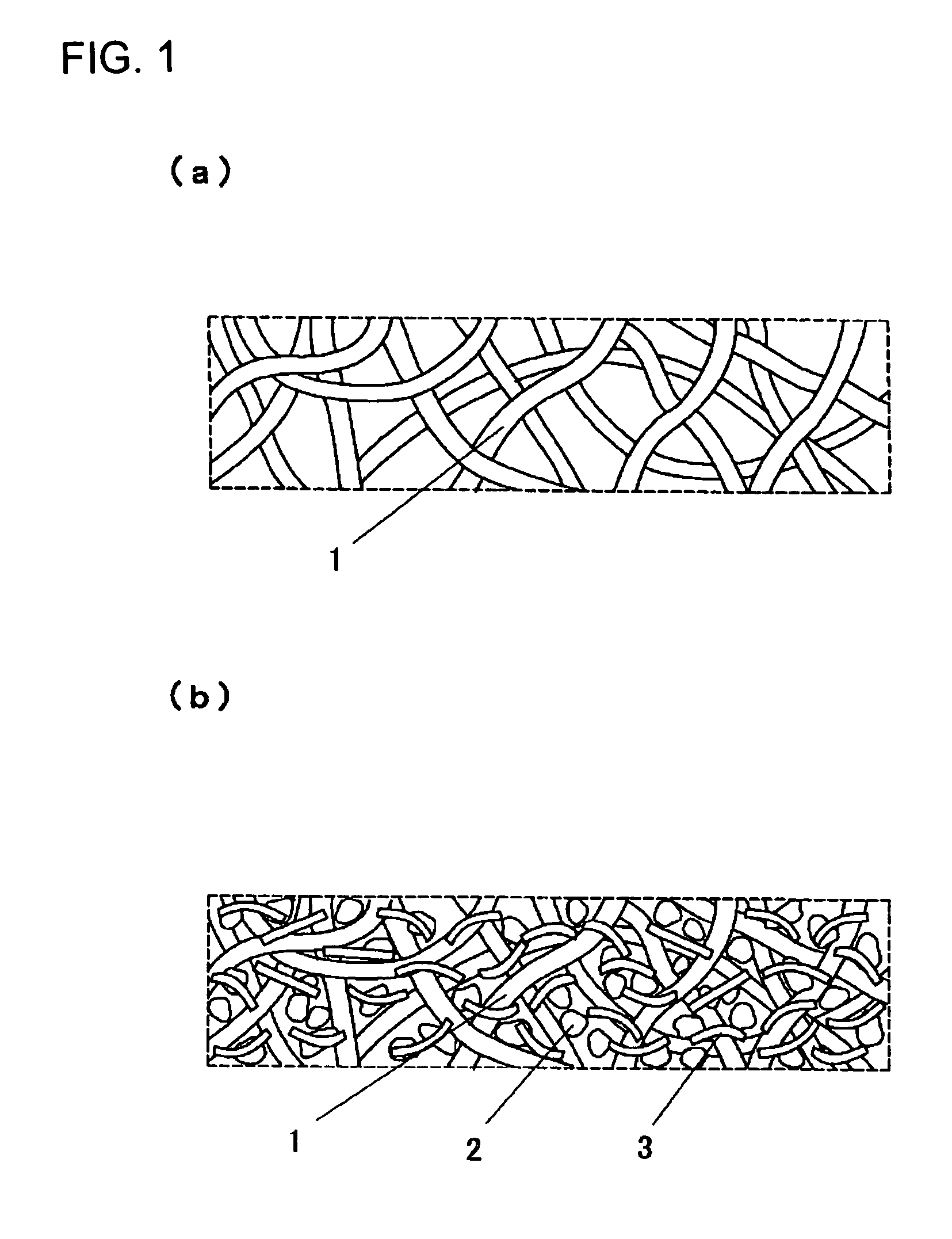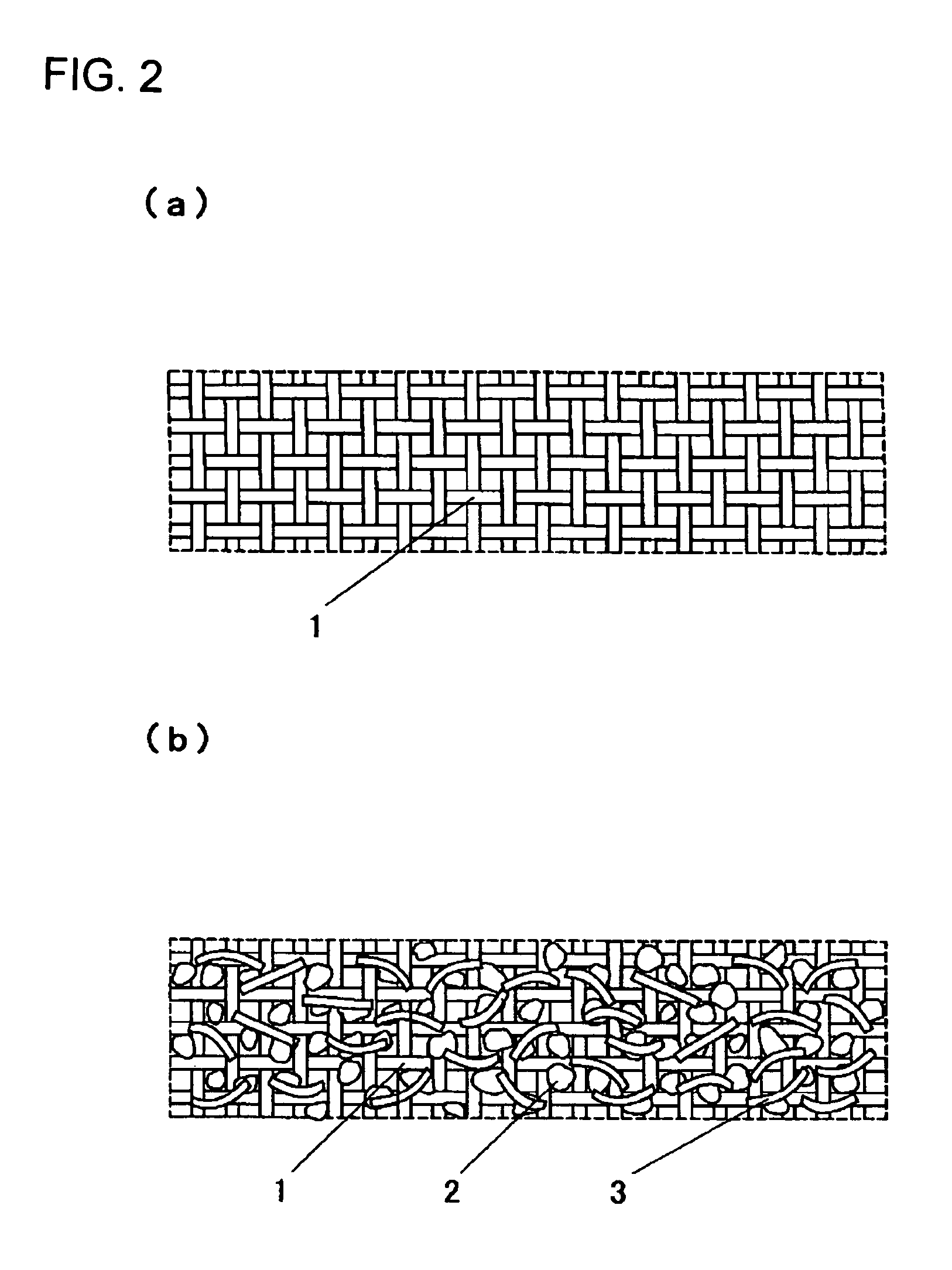Electrode and electrochemical cell therewith
a technology applied in the field of electrochemical cells and electrodes therewith, can solve the problems of reducing the electrochemical reaction speed, reducing the electrode resistance, so as to improve the electron conductivity, the effect of good cycle properties and electrode strength, and quick charge/discharg
- Summary
- Abstract
- Description
- Claims
- Application Information
AI Technical Summary
Benefits of technology
Problems solved by technology
Method used
Image
Examples
example 1
[0077]A cathode active material was 5-cyanoindole trimer compound as a proton-conducting compound, a cathode conductive auxiliary was fibrous carbon (VGCF); and a binder was PVDF with an average molecular weight of 1,100. These were sequentially weighed to a weight ratio of 69 / 23 / 8 and mixed by stirring in a blender.
[0078]Then, 10 mg of the mixture powder was stirred in 1 mL of DMF for 5 min at an ambient temperature to give a homogeneously dispersed slurry. A porous conductive substrate as a support for an electrode was a non-woven carbon-fiber fabric with a porosity of 45% and a thickness of 80 μm. Pores in the porous conductive substrate were filled with the resulting slurry using a squeegee to give a cathode with a filling rate of 12% and a thickness of 100 μm, which was then cut into a predetermined shape for use.
[0079]Then, polyphenylquinoxaline, a proton-conducting polymer, was used as an anode active material and Ketjen Black (Ketjen Black International Company, EC-600JD) wa...
example 2
[0083]An electrochemical cell for a secondary battery was prepared as described in Example 1, except that a non-woven carbon fiber fabric with a porosity of 78% and a thickness of 80 μm was used as a porous conductive substrate for a support in an electrode. The resulting cathode had a filling rate of 20% and a thickness of 100 μm while the anode had a filling rate of 20% and a thickness of 100 μm.
example 3
[0084]As described in Example 2, a non-woven carbon fiber fabric with a porosity of 78% and a thickness of 80 μm was used as a porous conductive substrate for a support in an electrode. A slurry prepared as described in Example 1 was used in impregnation under a pressure to give a cathode with a filling rate of 30% and a thickness of 100 μm. Similarly, an anode with a filling rate of 30% and a thickness of 100 μm was prepared. As described in Example 1 for the other conditions, an electrochemical cell for a secondary battery was prepared.
PUM
| Property | Measurement | Unit |
|---|---|---|
| porosity | aaaaa | aaaaa |
| length | aaaaa | aaaaa |
| diameter | aaaaa | aaaaa |
Abstract
Description
Claims
Application Information
 Login to View More
Login to View More - R&D
- Intellectual Property
- Life Sciences
- Materials
- Tech Scout
- Unparalleled Data Quality
- Higher Quality Content
- 60% Fewer Hallucinations
Browse by: Latest US Patents, China's latest patents, Technical Efficacy Thesaurus, Application Domain, Technology Topic, Popular Technical Reports.
© 2025 PatSnap. All rights reserved.Legal|Privacy policy|Modern Slavery Act Transparency Statement|Sitemap|About US| Contact US: help@patsnap.com



